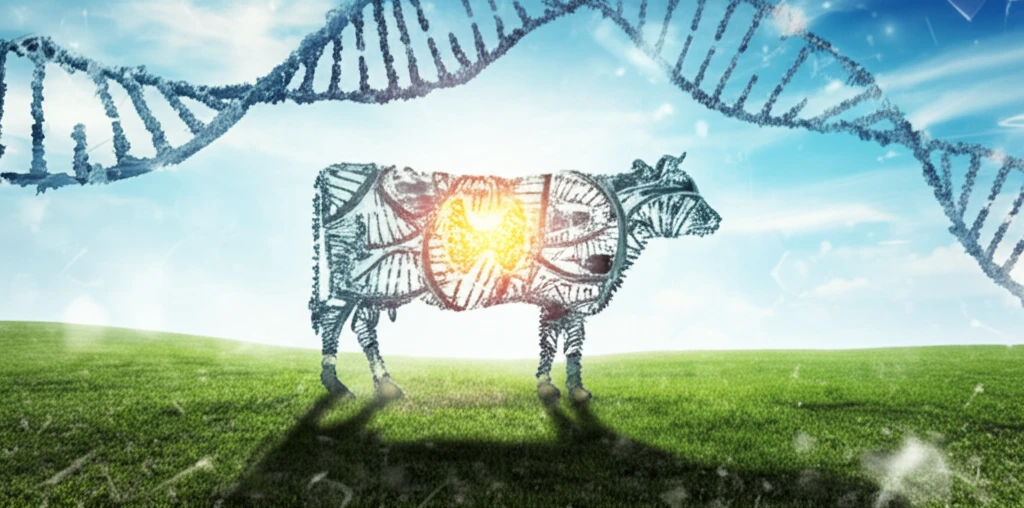
Unlocking Bovine Fertility: How Gene Networks Hold the Key to Better Breeding
"Dive into the groundbreaking research that reveals how multi-OMICs data is revolutionizing our understanding of fertility and production traits in beef cattle."
For years, breeders have strived to enhance fertility and production in beef cattle, often facing a complex web of genetic and environmental factors. Traditional methods can be slow and sometimes lead to unintended consequences, like selecting for traits that boost production but compromise fertility. Now, a new approach is emerging that promises to revolutionize the field: multi-OMICs analysis.
Multi-OMICs integrates different layers of biological information—genomics, transcriptomics, proteomics, and more—to provide a holistic view of the factors influencing complex traits. By combining these data, researchers can pinpoint the key regulator genes responsible for pleiotropy, where a single gene influences multiple traits. Understanding these genes is crucial for making informed breeding decisions that improve both fertility and production.
Recent research published in PLOS ONE has done just that, using a systems biology approach to identify candidate genes with pleiotropic effects on economically relevant traits in beef cattle. This approach promises a future where breeding is more precise, efficient, and sustainable.
Decoding the Genetic Blueprint of Fertility

The study, led by researchers from the University of Guelph and other international institutions, utilized data from three independent beef cattle populations, each evaluated for fertility traits. By mapping genes shared among these populations to regions known to have pleiotropic effects—influencing a range of traits from growth and feed efficiency to carcass quality and reproduction—the team was able to narrow down a list of key candidate genes.
- Integrated multi-OMICs data from Brangus, Tropical Composite, and Brahman cattle breeds.
- Identified genes located near pleiotropic markers associated with various production and fertility traits.
- Mapped shared genes against the Cattle QTL database to identify QTL categories.
- Performed functional analyses to understand the biological roles of the identified genes.
Breeding a Better Future
By identifying these key regulator genes, researchers have opened new avenues for understanding the complex biological processes that govern fertility and production in beef cattle. Further investigation into these genes promises to unlock more precise breeding strategies, leading to healthier, more productive herds and a more sustainable future for the industry.
